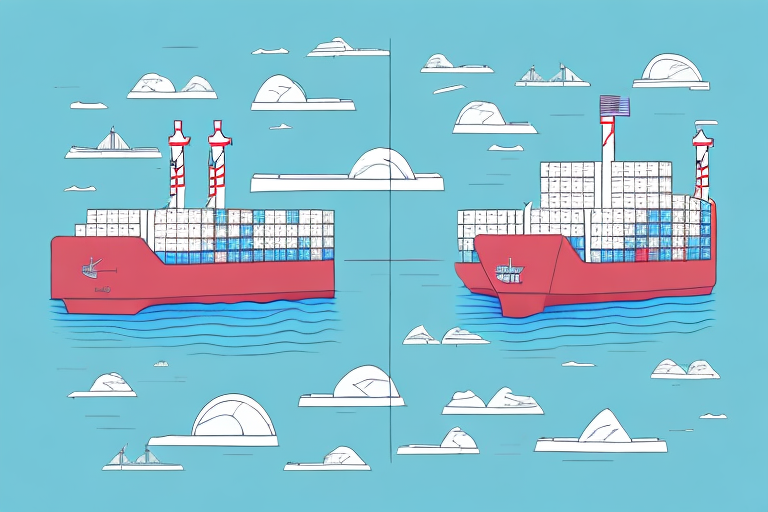7 Freight Invoice Errors to Avoid
As businesses continue to expand their operations and reach new markets, the importance of accurate and timely freight invoicing cannot be overstated. However, invoice errors can occur, leading to difficulties in reconciling accounts, supplier dissatisfaction, and ultimately, financial loss for the company. In this article, we will explore seven common freight invoice errors businesses should avoid, as well as strategies for preventing them.
Introduction to Freight Invoicing
Freight invoicing involves the process of sending and receiving invoices for goods and services shipped between two or more parties, typically involving freight carriers and shippers. These invoices outline the costs involved in the transport of goods and typically include freight rates, weight, and other charges. While accurate invoicing is crucial for the financial well-being of both shippers and carriers, mistakes can and do occur.
One common mistake in freight invoicing is incorrect weight measurements. This can happen when the weight of the goods is not properly recorded or when the weight of the packaging is included in the total weight. Another mistake is incorrect freight rates, which can occur when the carrier charges a different rate than what was agreed upon or when there are errors in the calculation of the rate.
To avoid these mistakes, it is important for both shippers and carriers to have clear and detailed agreements in place before the shipment takes place. This includes outlining the weight and dimensions of the goods, the agreed-upon freight rates, and any additional charges that may apply. By having a clear understanding of the invoicing process and taking steps to prevent errors, both parties can ensure that they are paid accurately and on time.
Importance of Accurate Freight Invoicing
Freight invoicing errors can result in additional time and resources spent rectifying mistakes, loss of goodwill with suppliers, and even contract breaches. Inaccurate invoicing can also lead to delayed payments and potential legal disputes. According to a report by the U.S. Department of Transportation, businesses face significant financial losses each year due to invoicing inaccuracies. Accurate invoicing is essential for maintaining positive relationships with carriers and suppliers, enabling the efficient flow of goods and services, and ensuring continued business success.
Moreover, accurate freight invoicing can help businesses identify areas for cost savings and optimization. By tracking and analyzing freight costs, businesses can identify inefficiencies in their supply chain and make informed decisions to improve their operations. Accurate invoicing data can also be used to negotiate better rates with carriers and suppliers, leading to significant cost savings over time.
Common Causes of Freight Invoice Errors
Several factors contribute to freight invoice errors, including:
- Miscommunication between shippers and carriers
- Inconsistent invoicing practices
- Error-prone manual data entry
- Lack of quality control
- Outdated or inaccurate pricing information
- Human error, such as typos and incorrect calculations
To mitigate these issues, it's essential to establish robust invoicing and communication processes. Implementing standardized procedures and leveraging technology can significantly reduce the likelihood of errors.
Another common cause of freight invoice errors is the use of outdated or inaccurate pricing information. This can occur when carriers fail to update their rates or when shippers rely on obsolete pricing agreements. Regularly reviewing and updating pricing information ensures accurate invoicing and prevents overpayment or underpayment for services rendered.
Human error also plays a significant role in invoicing mistakes. Simple issues like typos, incorrect calculations, or misinterpretation of data can lead to significant discrepancies. Utilizing automated invoicing systems and incorporating multiple layers of review can help minimize these risks.
Common Freight Invoice Errors
Error #1: Incorrect Freight Rates
Incorrect freight rates are among the most prevalent invoicing errors. This can stem from incorrect weight and dimensions, wrong rate classes, or misapplied fuel surcharges. To prevent this, it's crucial to verify rate quotes with carriers and ensure all relevant data is accurate. The American Public Shipping Council emphasizes the importance of maintaining up-to-date rate agreements to avoid financial discrepancies.
Additionally, outdated pricing agreements can lead to overpayment or underpayment for shipping services. Regularly reviewing and updating these agreements with carriers ensures that the rates charged are current and accurate, safeguarding the company’s financial interests.
Error #2: Missing or Inaccurate Information
Missing or inaccurate information on invoices, such as incorrect addresses, inaccurate quantity or weight data, and missing line items, can lead to significant payment delays and disputes. Implementing a standardized invoicing process, which may include using templates with pre-filled information and conducting thorough data checks before submission, can mitigate these errors.
Maintaining open communication channels with carriers and suppliers ensures that any changes or updates to information are promptly communicated, thereby preventing delays in payment and potential disputes over incorrect invoicing.
Error #3: Duplicate Charges
Duplicate charges occur when the same invoice is processed more than once, leading to overpayment. This can be addressed by implementing proper quality control procedures and thoroughly reviewing invoices before processing payments.
Lack of communication between different departments, such as accounting and procurement, often leads to duplicate charges. Establishing clear communication channels and utilizing software that flags potential duplicates can significantly reduce this risk.
Error #4: Incorrect Currency Conversion
For companies operating internationally, incorrect currency conversion can result in payment discrepancies and reconciliation errors. Ensuring that all currency conversions use accurate and up-to-date exchange rates is essential. Tools like OANDA provide reliable exchange rate information that can be integrated into invoicing systems.
Additionally, verifying that the correct currency is used for each transaction and considering automated invoicing software that handles currency conversions can reduce the risk of human error.
Error #5: Late Invoicing
Delayed invoicing can frustrate both carriers and shippers, leading to payment delays and additional charges. Implementing efficient communication processes and ensuring that all invoices are dispatched promptly is vital for maintaining healthy cash flow and positive business relationships.
Late invoicing can negatively impact a company’s cash flow, affecting its ability to meet financial obligations. Prioritizing timely invoicing helps maintain trust between business partners and ensures smooth financial operations.
Error #6: Failure to Account for Additional Charges
Failure to account for extra charges, such as accessorial charges, can lead to invoicing errors and unexpected expenses. It's important to thoroughly document and agree upon all additional charges with carriers before shipment.
Accessorial charges can vary based on the carrier and shipment type, including fees like liftgate charges, residential delivery fees, and inside delivery fees. Understanding and incorporating these charges into your shipping costs can prevent disputes and ensure accurate billing.
Error #7: Failing to Reconcile Accounts with Carriers
Regularly reconciling accounts with carriers is essential to identify and correct invoicing errors promptly. Failure to do so can result in billing disputes and financial discrepancies.
Monitoring account statements and invoices for accuracy and promptly addressing any discrepancies with carriers helps maintain financial integrity. Utilizing automated reconciliation systems can streamline this process, reducing the likelihood of errors.
Impact of Freight Invoice Errors on Business Operations
Invoicing errors can have far-reaching negative effects on business operations. Disputed invoices and delayed payments can complicate account reconciliation, leading to supplier dissatisfaction, reputational damage, and financial losses.
Furthermore, freight invoice errors can create operational inefficiencies. Incorrect billing information might cause delays in goods delivery, resulting in missed deadlines and lost sales opportunities. Additionally, inaccurate invoicing can lead to erroneous inventory records, complicating stock management and future order planning. These inefficiencies can disrupt the entire supply chain, ultimately affecting customer satisfaction.
Strategies for Avoiding Freight Invoice Errors
Implementing a robust invoicing process is crucial for minimizing errors. Key strategies include:
- Adopting electronic invoicing systems to enhance accuracy and consistency
- Verifying rate quotes with carriers to ensure all charges are correct
- Regularly reviewing and reconciling accounts to identify and address discrepancies promptly
Ensuring that all necessary information is included on invoices is another critical strategy. This includes accurate shipment details, such as weight and dimensions, special handling requirements, and correct billing and payment information. Comprehensive invoicing helps prevent errors and facilitates swift processing of payments.
Advantages of Outsourcing Freight Invoice Processing
Outsourcing freight invoice processing to third-party vendors can help businesses avoid invoicing errors by leveraging specialized expertise and advanced technology. Benefits of outsourcing include:
- Reducing internal resource allocation and overhead costs
- Enhancing accuracy and timeliness of invoicing through expert handling
- Accessing advanced software systems designed for efficient invoice processing
Moreover, outsourcing can lead to faster payment processing and improved cash flow, as dedicated teams focus on managing invoicing tasks effectively.
Best Practices for Managing Freight Invoicing
Adopting the following best practices can significantly improve freight invoicing management:
- Implement Automation Tools: Utilize electronic invoicing systems and quality control checks to reduce manual errors.
- Negotiate Clear Contracts: Establish clear and concise contracts with shippers and carriers upfront to define all terms and charges.
- Regular Account Reconciliation: Frequently review and reconcile accounts to ensure all invoices are accurate and up-to-date.
- Employee Training: Train employees on proper invoicing procedures and the importance of accuracy in financial documentation.
- Use of Reputable Software: Invest in reliable invoicing software that can handle complex calculations and provide audit trails.
Conclusion and Final Thoughts
Proper management of freight invoicing is essential for the success of any business that relies on a supply chain. By avoiding common invoicing errors and implementing robust invoicing and quality control processes, businesses can maintain positive relationships with carriers and suppliers, avoid financial losses, and ensure continued growth and success. Leveraging technology, outsourcing where appropriate, and adhering to best practices can significantly enhance the accuracy and efficiency of freight invoicing, ultimately contributing to a more streamlined and profitable operation.




















